Q&A with Tony Antoniou at Rainbow
When Tony Antoniou, Managing Director of Rainbow, shared his opinion on the impact of COVID19 on the workplace sector we knew he was somebody we needed to interview. In this Q&A we learn more about Tony and his business, the importance of office based working and a move to blended working, as well as the impact of COVID19 on the workplace sector.

Please could you begin by telling me about yourself?
I came across office furniture by accident way back in 1987. I was sold the job, decided it could be good and here I am 33 years later.
When I started, it was very much a 1980’s type of selling environment and one I really didn’t enjoy. I believe in building relationships, working with people and helping them, not making as much money as possible then moving on.
This mind-set is what’s encouraged customers to become clients and forge relationships that can – and have – lasted for decades.
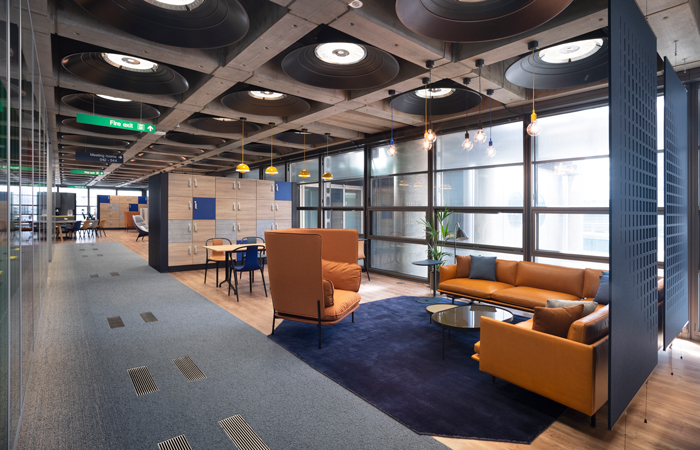
Please could you tell me about Rainbow?
In 1990 I created Rainbow Office Design as an office furniture provider to incorporate these values. At Rainbow we win clients not projects and this philosophy carries through in everything we do. It’s why 5 years ago, when we went through a rebrand, our company ethos became part of our brand – “relationships matter”.
Along with many workplace projects, we’ve delivered a huge amount of library projects and several extremely high-profile hospitality projects to venues such as Twickenham, Wembley, Brighton and Hove Albion’s AmEx community stadium, I decided to drop ‘Office Design’ from our name and we became Rainbow.
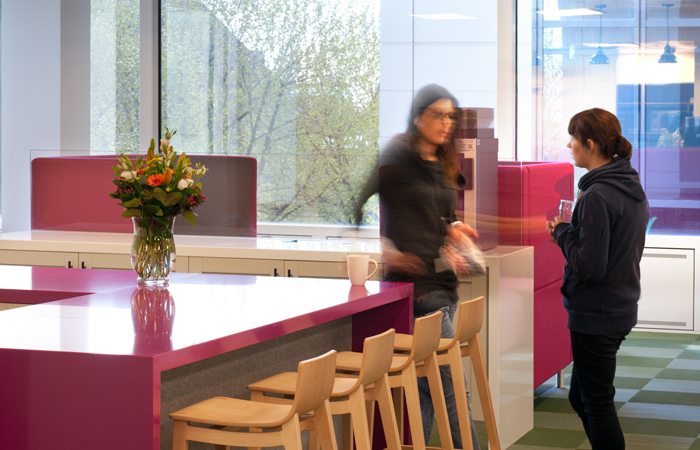
Why is it important to you that your team at Rainbow are able to be ahead of the trend?
Forging a long-term relationship with a client requires an extremely high level of service before, during, and after a project. To achieve this, the team are constantly learning and developing new ideas, while I keep an eye out for any changes in products and the office landscape.
We implement a proactive approach, so we don’t simply sit and wait for clients to let us know what they want, we educate, update and inform them about the coming changes. This enables them to understand the potential benefits of these changes and if they’re suitable, we implement them together on any projects they may have in order to take advantage of these benefits.
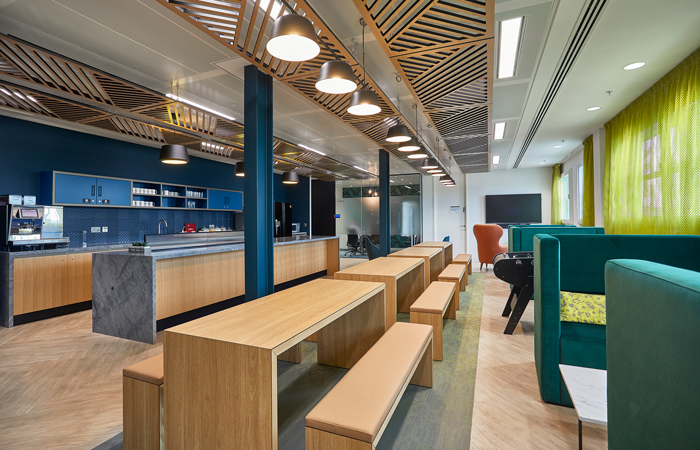
In what ways do you and your team assist your clients with their workplace projects?
Being completely independent, we aren’t obliged to talk clients into purchasing particular brands or products. Therefore, every suggestion, recommendation and decision we make has our clients best interest in mind. Sometimes this approach means less profit for Rainbow, but providing the best advice builds trust and encourages clients to continue working with us for many years.
We have access to a huge variety of products, manufacturers, designs and price points so we always find the ideal products. We also arrange showroom visits, sample products, mock ups and 3D renders to help clients understand our proposal and how their space will look.
Prior to lockdown what was your opinion on agile working?
Agile working is excellent. It gives people the freedom to choose the best workspace for the task they are performing at that moment in time. However, in order for it to be successful, the company culture needs to be considered too.
Most workspaces have the means for people to work from different places, but some feel they’ll be criticised if they’re not at their desk. This discourages the use of more appropriate workspaces in favour of “showing” their managers they’re working.
People should be judged on output not input; it shouldn’t matter when or where a person performs their task, only that it’s completed to the standard and time frame required.
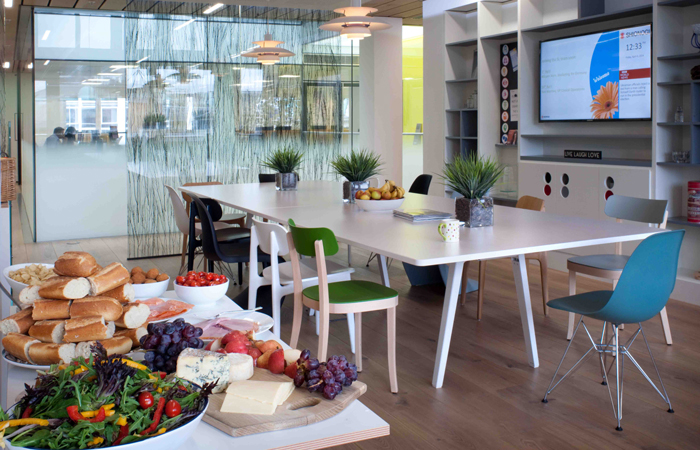
During lockdown you completed your own research, what did this entail?
Lockdown made me question the importance of my industry for the first time ever. Everyone was asking, ‘what will happen to offices after lockdown?’, ‘will they still be required?’, ‘will they change, and if so, how?’.
I spoke with manufacturers, product designers and end-users, and conducted interviews with top interior designers regarding their thoughts on the impact to the workplace and what changes would come from the lockdown. They recorded these, then we edited them, and posted online for all to see.
Whilst they all had their own individual comments, the overriding thoughts were very similar. This was reassuring because if everyone has the same thoughts, there’s a better chance they will come to fruition.
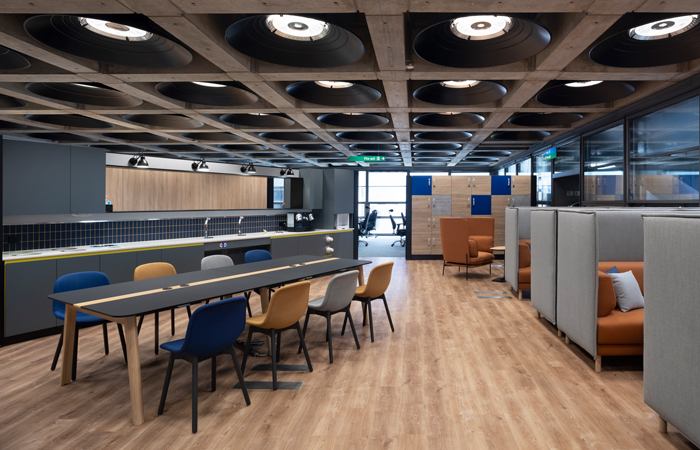
What did you learn from this research?
The short-term changes are simply about how to get people back to the office safely, i.e. social distancing, cleaning regimes, divider screens and wider directional corridors etc, but the biggest consensus for a long-term change is that working from home will continue, although on a part-time basis.
To this end, if everyone decided to work two days a week from home, there would be a 40% decrease in the occupancy of a workplace. Companies can use this opportunity to decrease the number of workstations and/or change the amount of space they lease and create a more engaging and inspiring workplace.
Offices will need to become more social because the ‘concentration work’ will take place at home, so the office will be used to catch up with colleagues personally and professionally. This allows for them to confirm previous work and ideas, while sparking and thrashing out new ones. This is also the time when personal relationships can develop from teammates to real friends that care for one another and look out for each other’s wellbeing.
It’s these bonds that are vital for a company to develop because they bring teams together, get everyone working in the same direction, and help to create the culture of a workplace.
To accommodate the more flexible approach to working, offices will need to open earlier and close later for those wanting to beat the rush hours. Kitchens will also be required to extend to encourage more socialising.
Collaboration spaces must be increased as more get togethers will be taking place during office days as well as spaces that promote both mental and physical wellbeing, for example, a room that could be used for meetings and double up as a yoga studio.
More space will also need to be allocated for video conference calls, (both individuals and group) because those at home will be more contactable that way.
The places they emerge will be great places to be.
Has COVID19 accelerated an inevitable move from office-based working to blended working?
All these changes were going to happen; they aren’t new phenomenon’s, so there are no surprises in the above. The difference is that these were going to be mainstream in around 10-15 years, now they will happen within 1-2 years.
Why is trust in a business so important when considering blended working?
There are benefits for people to work from home; no commute (which saves money), no distractions, and more family time.
There are also great personal benefits for working from an office, as mentioned previously, and of course, the office is where on the job learning takes place, where company values are passed on and where clients come and visit.
With both options offering their own unique benefits, it makes sense for a company to allow people flexibility, but there needs to be a level of trust from both ends; companies must trust their employees to do the work, and employees must appreciate the trust and work efficiently and effectively at all times wherever they’re based.
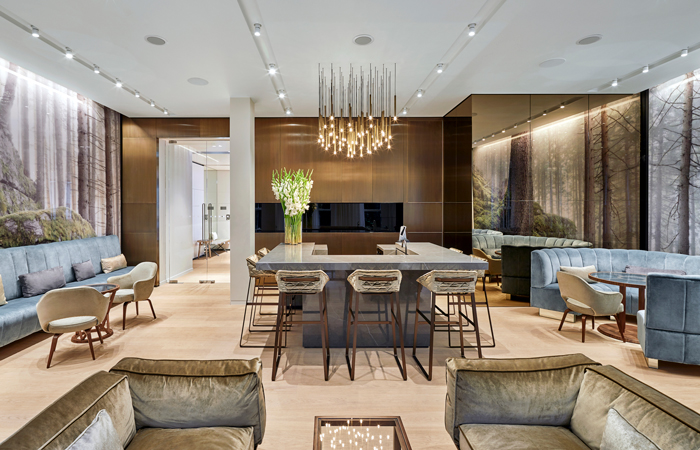
Can a business achieve the same results without an office?
If a company doesn’t have an office, it becomes harder to form relationships, build teams and pass on company values. Not only that, but on the job learning would be extremely difficult. The theory of a role can be explained, but the day to day nuances, intuitive decision making and lessons learned from experience are almost impossible to pass on without working closely with someone.
If staff are only working from home, then you can’t build company loyalty as colleagues won’t form relationships in the same way as they would socialising face to face; video conferencing just isn’t the same. This lack of bonding means that people can easily change jobs as their workspace will remain the same whoever they work for.
On the flip side, why does an employer need to pay London rates to someone who doesn’t commute into an office? They may as well pay lower rates by employing people in more remote locations or even a different country!
The companies who look at the immediate initial cost savings that can come from having everyone working at home will be regretting their decision quite quickly.
The smart companies who take advantage of this opportunity and capitalise on the benefits by creating great spaces, looking after employees properly and offering blended working, will create the ideal work experience and attract the best talent. These will be the companies who thrive going forwards.
Contact Rainbow




